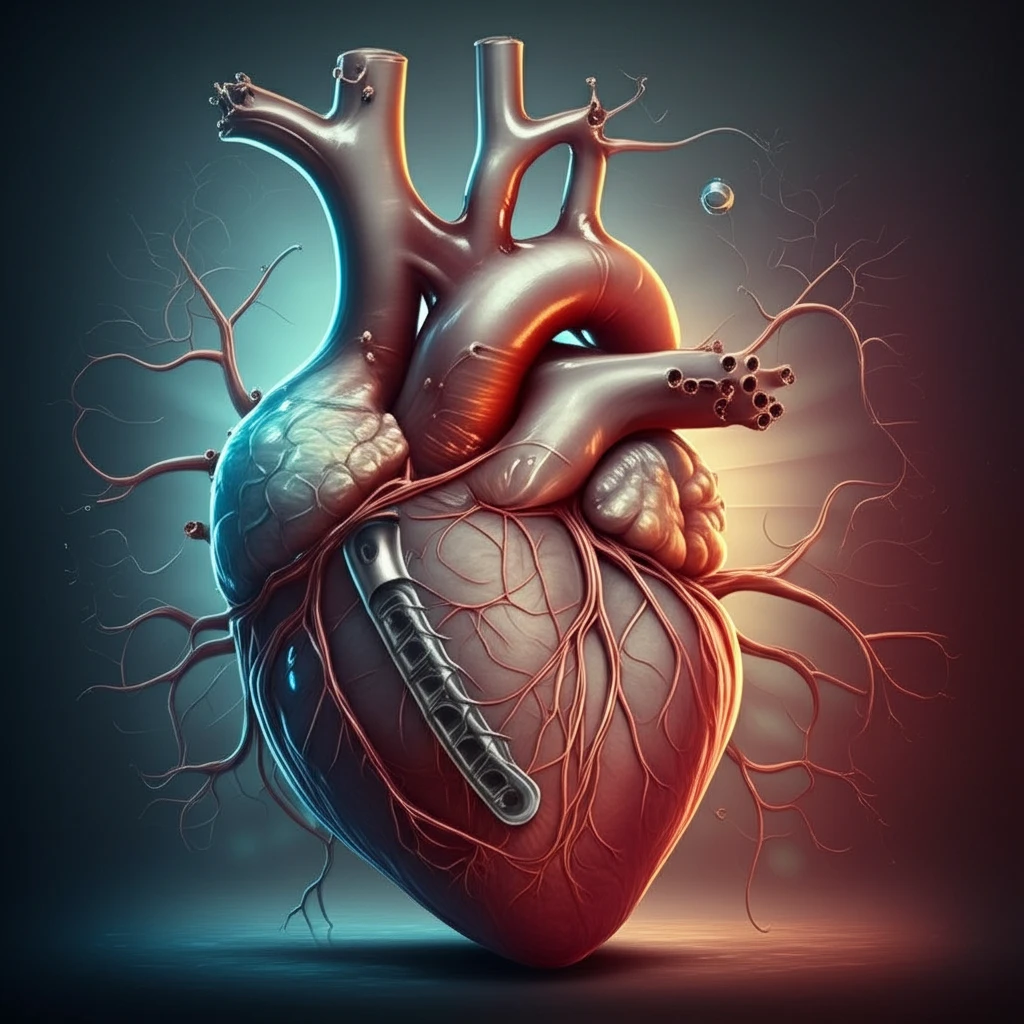
NuDEL™ System: The Future of Stent Delivery in Complex Heart Conditions?
"A groundbreaking system promises safer and more effective covered stent deployment, particularly in challenging anatomical conditions, marking a significant advancement in pediatric and adult congenital cardiology."
Stent implantation has become a cornerstone in treating conditions like right ventricular outflow tract obstruction and aortic coarctation, congenital heart disease which requires skilled cardiologist to safely perform, Stents correct narrowed or blocked vessels, improving blood flow and overall cardiac function. Ensuring the safety and accuracy of stent placement is critical.
Traditional methods of stent delivery can present challenges, particularly when dealing with complex anatomy. The process involves mounting the stent on a delivery balloon, navigating it through a sheath, and positioning it accurately. Each step carries potential risks, including stent slippage, balloon damage, and vascular trauma, which can lead to complications and require additional interventions.
To address these issues, the NuDEL™ system was developed by Numed Inc. This innovative system streamlines the delivery of covered stents. It combines a covered Cheatham-Platinum stent with a balloon-in-balloon system, pre-mounted and loaded in a long delivery sheath, aiming to simplify the procedure and reduce the risk of complications.
What is the NuDEL™ System and How Does It Work?

The NuDEL™ system represents a significant advancement in stent delivery technology. It consists of a covered Cheatham-Platinum stent pre-mounted on a specialized balloon-in-balloon system. This assembly is pre-loaded within a long, non-braided delivery sheath, simplifying the preparation and deployment process. A short, tapered nose cone is thermal-bonded to the end of the balloon shaft, replacing the standard dilator.
- Positioning: The stent is navigated to the target location within the vessel.
- Uncovering: The sheath is withdrawn, exposing the stent, guided by fluoroscopic markers that ensure precise placement.
- Inflation: The balloon-in-balloon system is inflated to expand the stent, securing it in the desired position.
Future Implications and Innovations
The NuDEL™ system represents a promising advancement in covered stent delivery, offering a potentially safer, more efficient method for treating complex cardiovascular conditions. As technology evolves, further refinements to sheath design and system ergonomics could enhance its utility. This technology also allows for rapid deployment of covered stents in emergency situations, such as conduit rupture, or in situations involving iatrogenic aortic dissection. Continuous innovation in delivery systems is crucial for improving patient outcomes.
